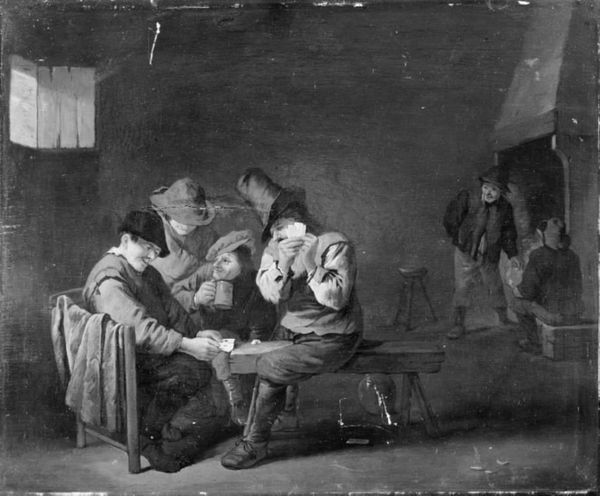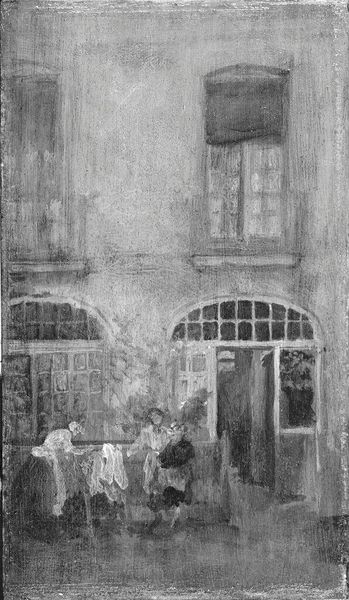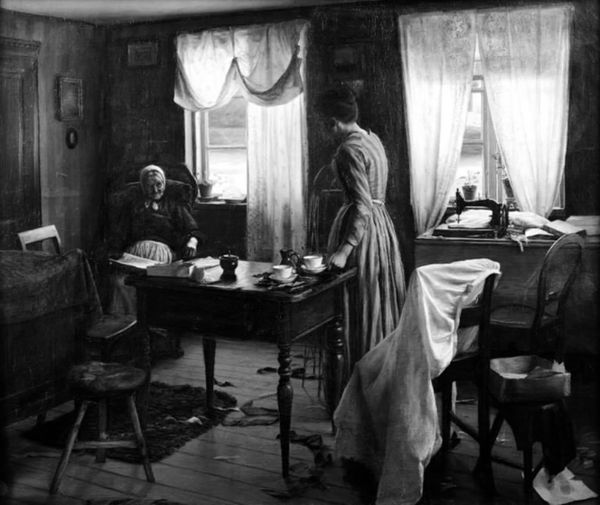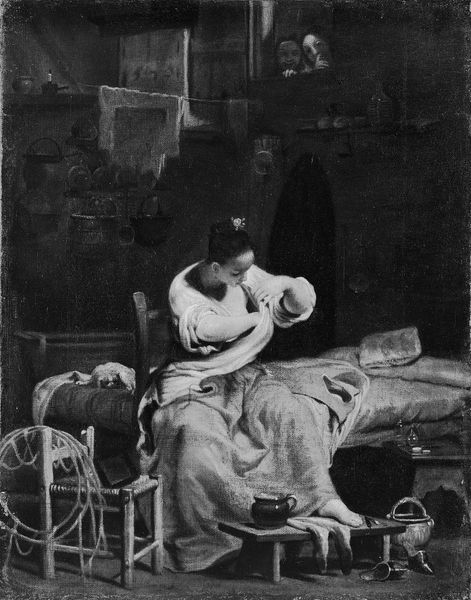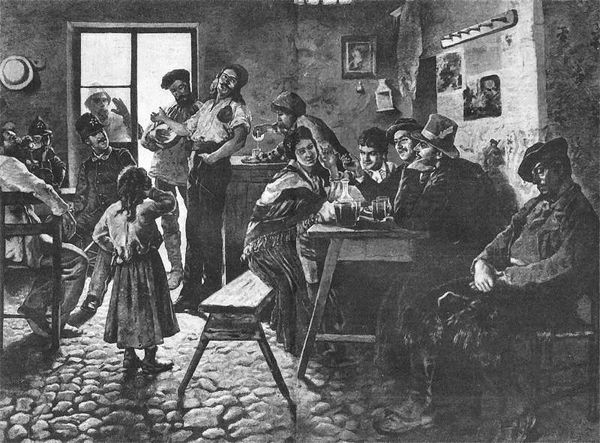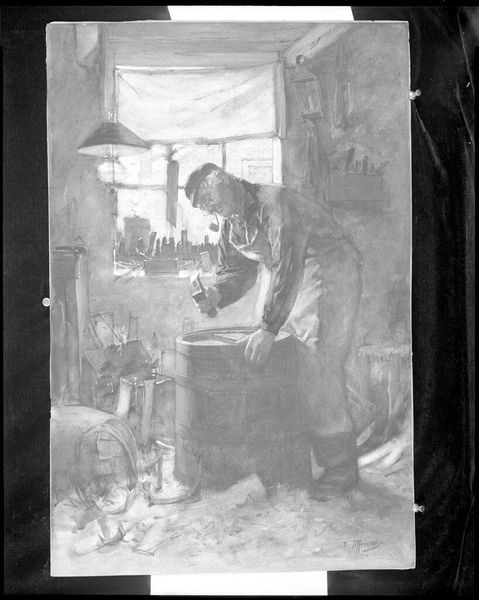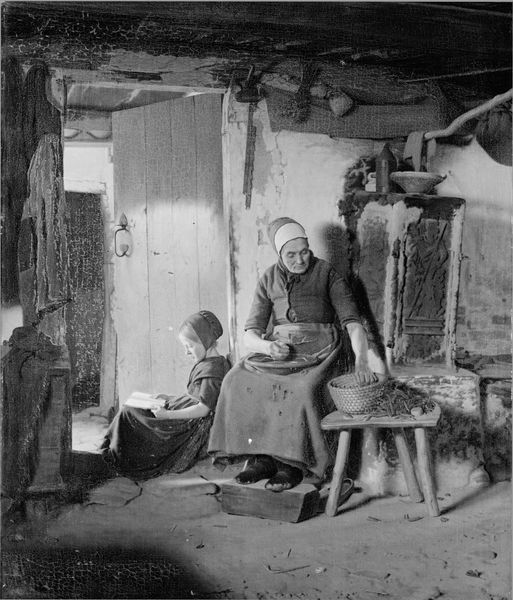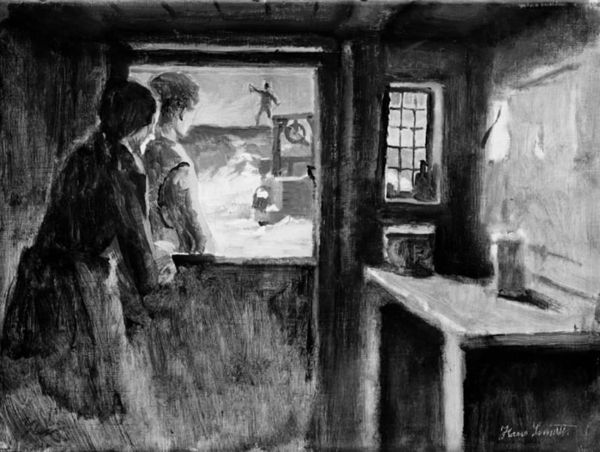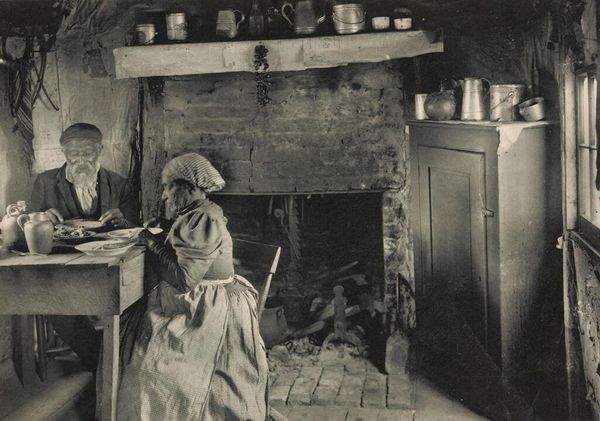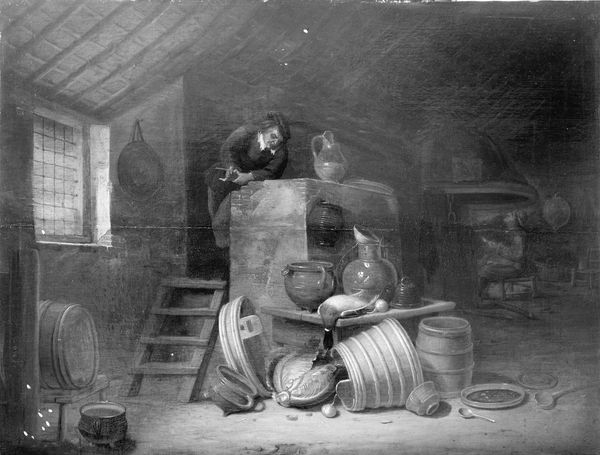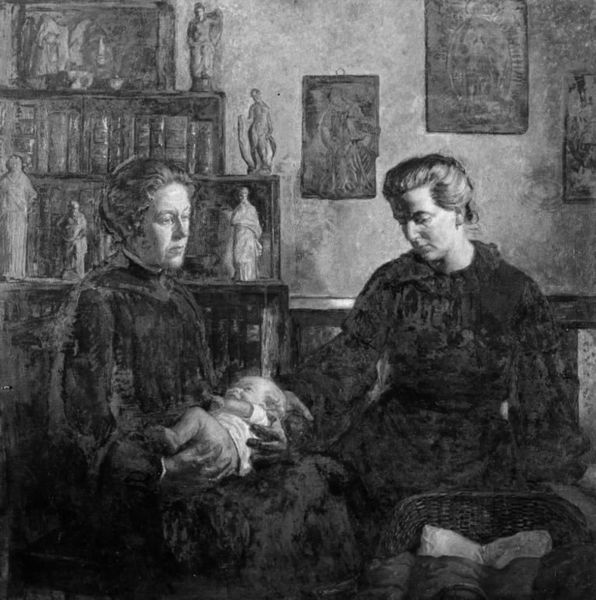
canvas
#
black and white photography
#
centre frame
#
black and white format
#
b w
#
canvas
#
black and white theme
#
black colour
#
black and white
#
monochrome photography
#
monochrome
#
front view
Dimensions: 39 cm (height) x 56 cm (width) (Netto)
Curator: "An Italian Interior," a canvas attributed to Wilhelm Marstrand and created sometime between 1825 and 1873, invites us into a domestic sphere rendered in monochrome. Editor: My first thought is how subdued it is. Despite the presence of figures, there's a quiet melancholy about it. It's almost as if the lack of color washes away some of the vitality. Curator: Exactly. Considering Marstrand’s interest in genre painting and portraying everyday life, especially among the common people, it is tempting to ask whether that alleged everyday is really attainable. Black and white lends itself to documentary value while hiding and sanitizing. This composition, while realistic, reflects power dynamics. Editor: The chairs certainly convey an aura of labour and restraint. Their design is basic, unadorned; clearly crafted for functional purposes rather than ornamentation. It is hard to turn my head from them. Their materials suggest something homespun or vernacular that contrasts that of a museum. Curator: Absolutely, let’s explore how domesticity gets created through that vernacularity, then. The figure on the left is presumably a serving girl, then seated is a woman stitching, perhaps mending clothes. A girl sits on the right, probably a daughter. Editor: What gets my attention is the quality of light streaming from that window. Notice how the artist models the face of the younger girl, and especially notice the stark contrast it produces along the tiled floor. Curator: Right. Now, reflecting on these details with a broader historical lens, it makes me wonder about the historical reception. The labor and social roles seem quite conventionally gendered. Does that domestic sphere act as a means of liberation, as space away from male governance or constraint? Editor: Or, does the artwork unintentionally critique domestic labour, highlighting how certain labour goes unseen? Curator: Both insights offer equally valid angles. We should always remember art and its receptions shift through space and time. Editor: Indeed. Focusing on materiality and labor alongside its theoretical context grants fresh eyes into otherwise unseen labour processes and its effects.
Comments
No comments
Be the first to comment and join the conversation on the ultimate creative platform.
